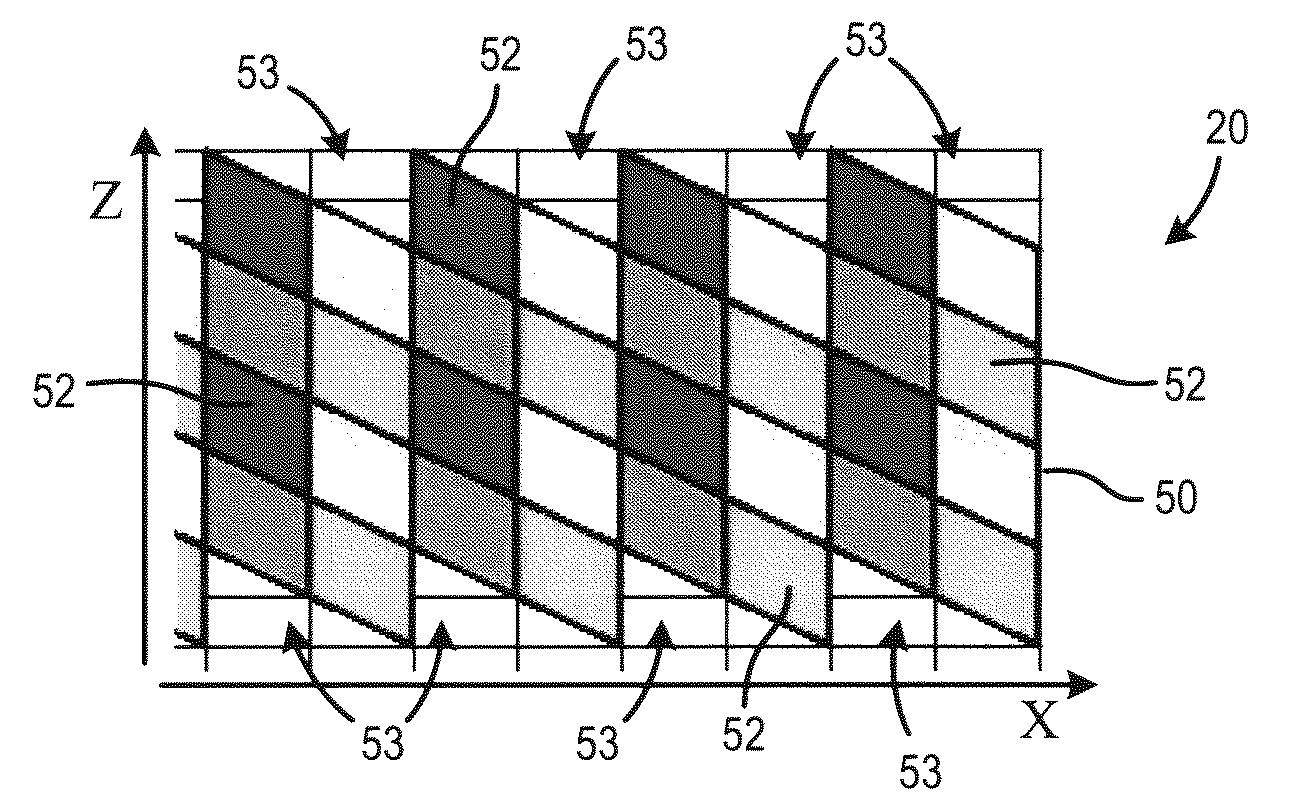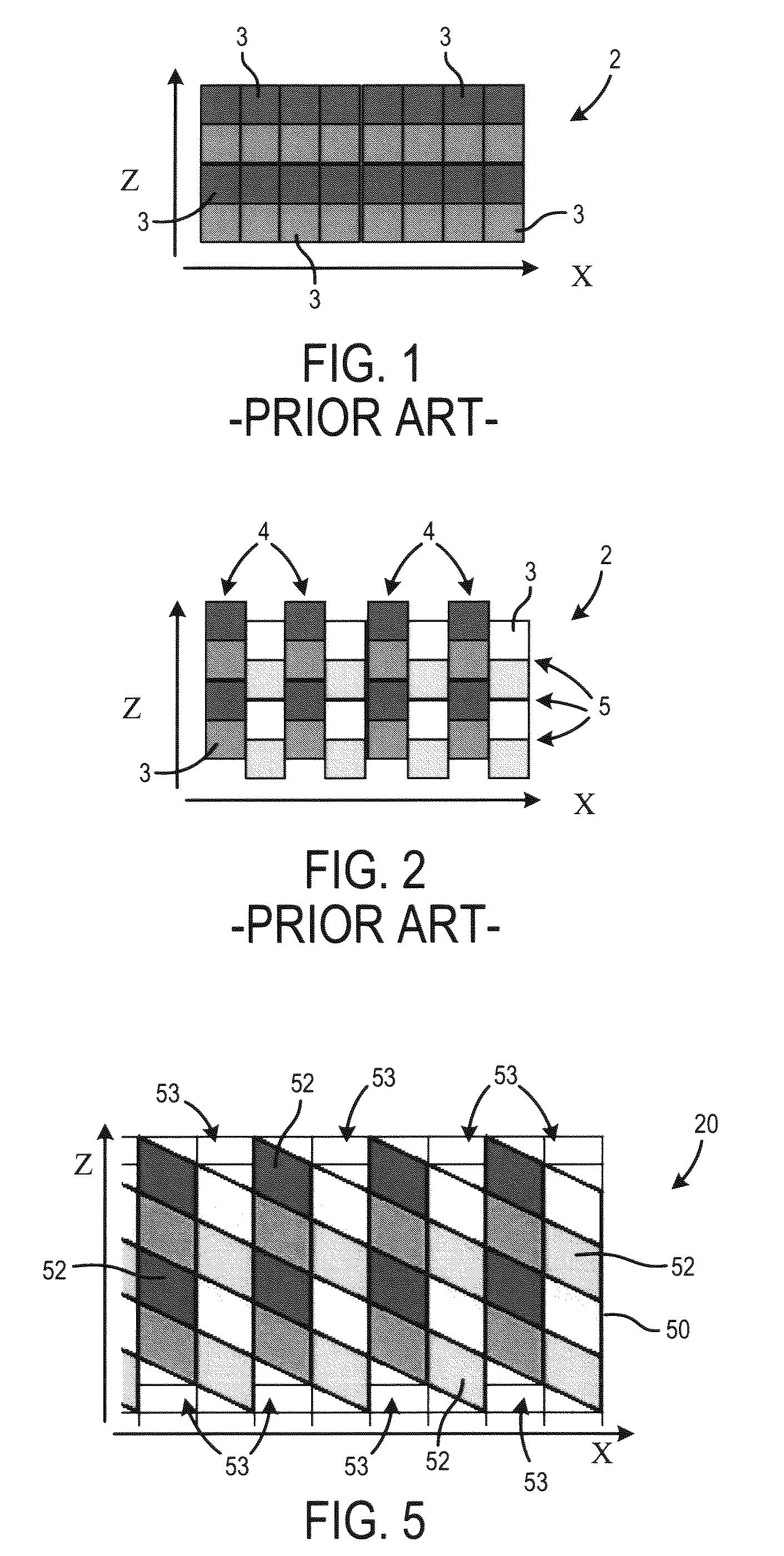CT detector with non-rectangular cells
a detector and non-rectangular technology, applied in tomography, instruments, nuclear engineering, etc., can solve the problems of system dqe degradation, system dqe degrade, and increase the nyquist frequency, so as to improve the spatial coverage and the effect of not increasing the number of detector channels
- Summary
- Abstract
- Description
- Claims
- Application Information
AI Technical Summary
Benefits of technology
Problems solved by technology
Method used
Image
Examples
Embodiment Construction
[0026]Referring to FIGS. 1 and 2, an exemplary computed tomography (CT) imaging system 10 is shown as including a gantry 12 representative of a “third generation” CT scanner. One skilled in the art will appreciate that the present invention is applicable with other configured CT scanners, such as those generally referred to as first generation, second generation, fourth generation, fifth generation, sixth generation, etc. scanners. Further, the present invention will be described to a CT detector cell geometry that is applicable with energy integrating cells as well as photon counting and / or energy discriminating cells.
[0027]Gantry 12 has an x-ray source 14 that projects a beam of x-rays 16 toward a detector array 18 on the opposite side of the gantry 12. Detector array 18 is formed by a plurality of detectors 20 which together sense the projected x-rays that pass through a medical patient 22. Each detector 20 produces an electrical signal that represents the intensity of an impingi...
PUM
 Login to View More
Login to View More Abstract
Description
Claims
Application Information
 Login to View More
Login to View More - R&D
- Intellectual Property
- Life Sciences
- Materials
- Tech Scout
- Unparalleled Data Quality
- Higher Quality Content
- 60% Fewer Hallucinations
Browse by: Latest US Patents, China's latest patents, Technical Efficacy Thesaurus, Application Domain, Technology Topic, Popular Technical Reports.
© 2025 PatSnap. All rights reserved.Legal|Privacy policy|Modern Slavery Act Transparency Statement|Sitemap|About US| Contact US: help@patsnap.com



